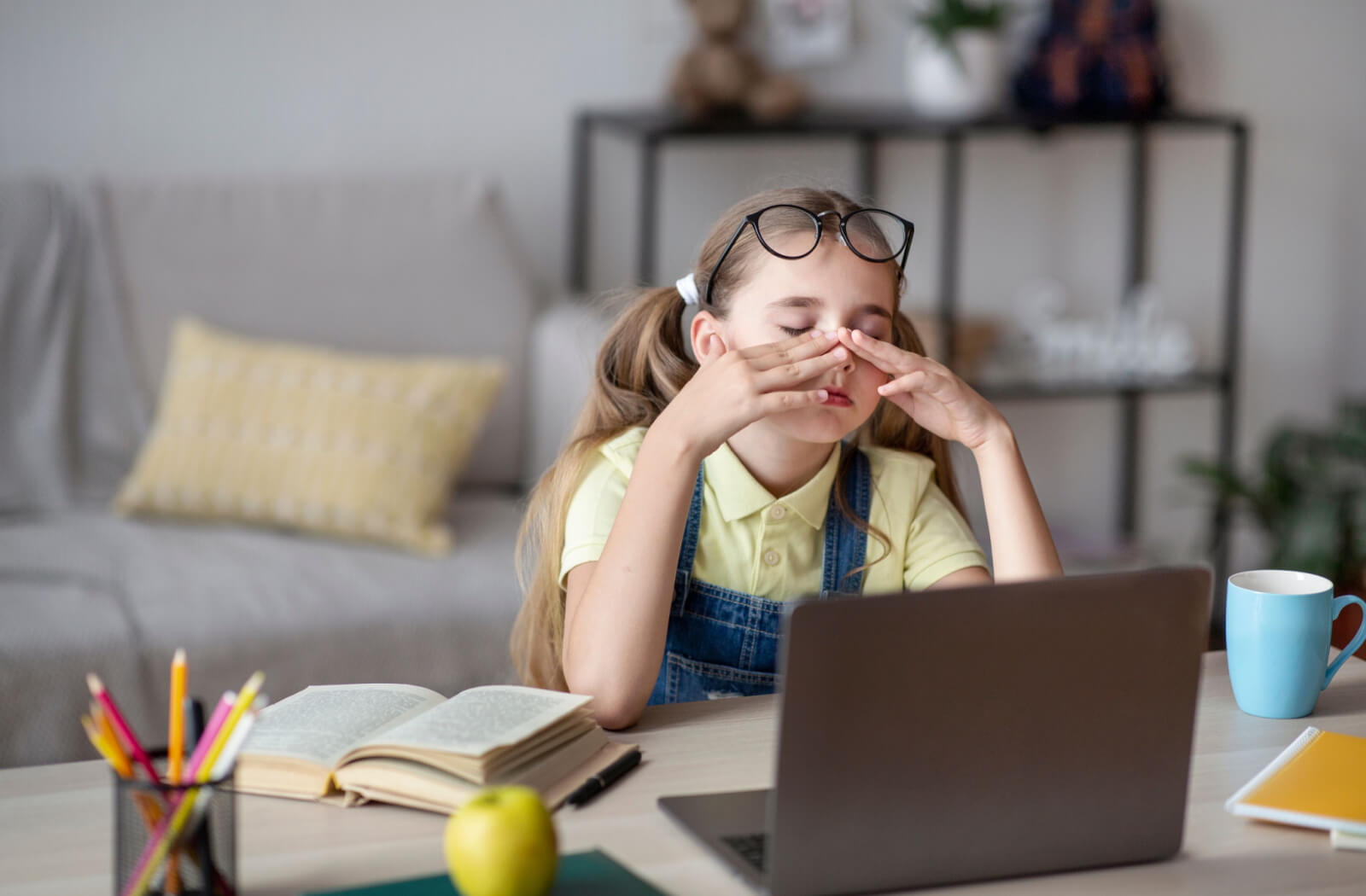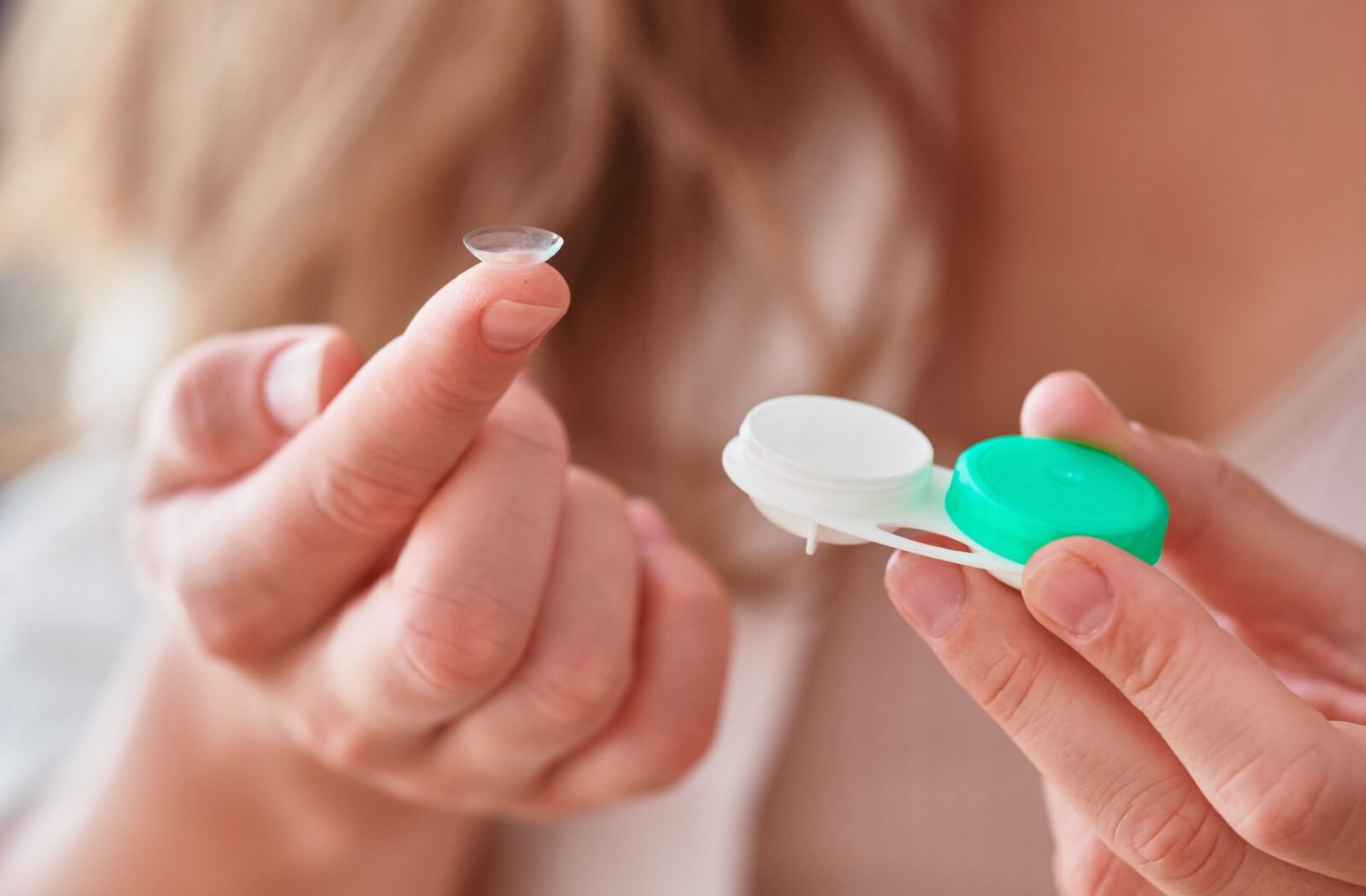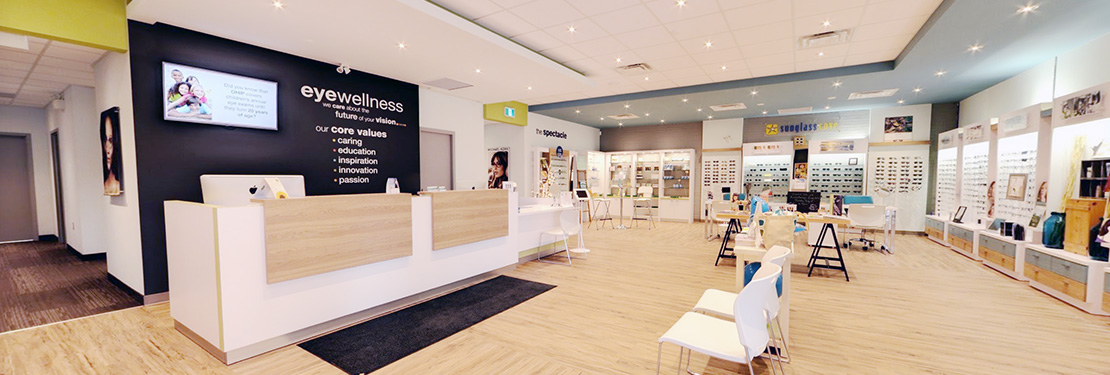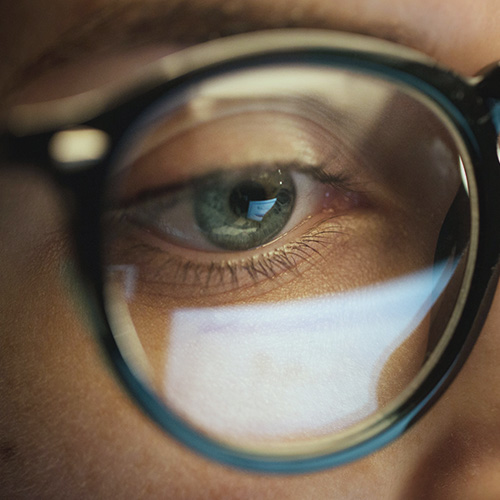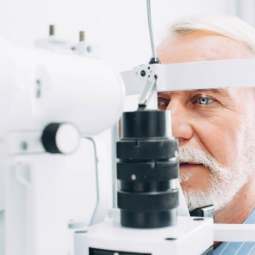Connecting Causes
Canadians spend an average of 11 hours daily using digital devices. And about 67% of Canadians say their eyes feel tired or strained after screen time, whether it’s computers, TVs, phones, or tablets.
Another significant cause of eye discomfort is dry eye, affecting an estimated 6 million Canadians.
Both eye problems can share similar symptoms–causing discomfort or dryness—but are the causes connected?
What Is Dry Eye?
Dry eye is a chronic condition related to tear quality or quantity. The eye’s surface receives a consistent layer of moisture, vitamins, and minerals from the tear film. As a result, tears spread evenly across the eye when you blink to help lubricate, protect, and clean. They also support healthy vision, maintaining a smooth, clear cornea.
In addition to dry eyes, common symptoms of dry eye include:
- Blurry or fluctuating vision
- Burning or stinging sensation
- A gritty or scratchy feeling
- The feeling of something in the eye
- Watery eyes
When left untreated, dry eye can harm eye health and vision. Excessive dryness can damage or scar the cornea (clear front of the eye), impairing vision. Without enough tears to clean the eye, dry eye also increases the risk of infection.
Does Screen Time Cause Dry Eye?
While various environmental and health conditions can cause dry eye, too much screen time is a significant risk factor.
Digital eye strain (computer vision syndrome) occurs when prolonged screen time causes uncomfortable symptoms, including dry eyes, blurry vision, and eye strain. The symptoms can be short-term or develop into long-term eye problems, including dry eye disease. The severity of your symptoms depends on your eye health and how long you’ve had the problem.
But how does screen time cause dry eye?
Lower Blink Rate
Blinking is essential for spreading tears across the eye. Yet, researchers have found people blink 66% less when viewing a digital screen. For comparison, the average person blinks 12 times per minute. Digital devices reduce the average blink rate to only 5 times per minute.
Skipping a few blinks in a minute might seem like a small thing. But imagine skipping hundreds or thousands! Depriving your eyes of moisture regularly can quickly add up to dry eye. Avoid eye dehydration by taking frequent screen breaks—and blinking more—to help spread the tear film.
Poor Hydration
When you’re intensely focused on a task, like finishing a work project or beating a high score in a video game, you might stay in the same spot for hours. But, while in the zone, you need a reminder to take a water break.
Dehydration can make dry eye symptoms worse. Tears need water to nourish the eye, so staying hydrated—or increasing your water intake—can help control symptoms.
Following the 8×8 rule (drinking an 8-ounce glass 8 times daily) is a helpful starting point. However, some people need more than 2 litres daily, depending on diet, environment, fitness level, and health. Generally, people who are frequently active or live in a drier environment should drink more water.
Solutions for Screen Time
When screen time affects your eye comfort, there are simple steps you can take to reduce symptoms.
20-20-20 Rule
The 20-20-20 rule is simple:
- Take a 20-minute break for every 20 minutes of screen time.
- Look at an object (at least) 20 feet away during your break.
Focusing your eyes at a further distance is crucial. You exhaust your eye muscles when you stare at the exact close distance for a prolonged time.
Imagine remaining in a squat or push-up position for hours. Staying in the same place is exhausting for your eye muscles—and your neck and back muscles! Taking a screen break is like a rest period between workout sets.
The 20-20-20 rule is a guideline, so it can be flexible. For example, set a timer for every hour to stretch and give your eyes a break. It’s okay to modify the rule to work for your lifestyle or situation as long as you take regular breaks!
Blue Light Filters
Digital screens emit blue light. Blue light is challenging for our eyes to process, leading to digital eye strain and dry eye. Low amounts of blue light are unlikely to harm eye health. However, most people use digital screens frequently, for long hours, and up close.
Blue light screen filters and blue light glasses can help reduce exposure to blue light. Adding a blue light filter app or wearing filtered spectacles can also help improve eye rest, as blue light can interrupt sleep patterns.
Ergonomics & Positioning
Poor posture, lighting, screen quality, and viewing distance can cause eye discomfort. Screen quality and lighting can affect how easily you can see the screen. Working your eyes harder can exhaust your eye muscles, leading to digital eye strain. Poor posture and viewing distance can also impact your eyes’ comfort while working.
Computer monitors or tablet screens should be an arm’s length away. It might be tempting to keep phone screens closer, but try to keep a similar distance apart. The top of the screen should be about eye level, as the eyes usually rest in a straightforward and downward position.
Dry Eye Treatment
Practicing healthy eye hygiene habits, including screen breaks, can help relieve minor symptoms of dry eye and digital eye strain. However, dry eye therapy can offer more options when severe dryness affects your daily life. At Eye Wellness, our focus is your health and well-being. We want to help you find eye care solutions for your lifestyle and provide the resources you need to protect your eye health long-term. So don’t let tired, dry eyes hold you back. Request an appointment today to discover personalized solutions for you and your family!


